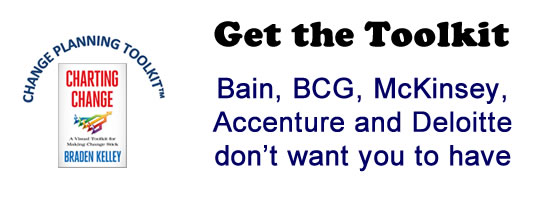How to Find Innovation Champions and Pilot Partners from Outside In

Creating corporate innovation is never easy and takes several steps. Carlson and Wilmot mention five disciplines:
Important Needs:Â Work on important customer and market needs, not just what is interesting to you.
Value Creation: Use the tools of value creation to create customer value fast.
Innovation Champions:Â Be an innovation champion to drive the value-creation process.
Innovation Teams:Â Use a multidisciplinary, team-based approach to innovation to create a collective, genius-level IQ.
Organizational Alignment:Â Get your team and enterprise aligned to systematically produce high-value innovations
Identifying innovation champions within your organization is not always easy. Appealing to self interest is one tip and there are many more. However, when it comes to identifying internal champions from the outside in, it is even harder to penetrate the internal firewalls. For example, suppose you have a digital health product that you want to develop and test with a hospital or physician provider? How and where do you find those people interested in innovating who are earlyvangelists and adoptors?
What are early adoptors?
Here are some ways to find them:
1. Create a free to the customer model so they don’t have to pay for it
2.Make it painless. Be sure to make your product as easy to buy and use as possible so that you do most of the work and they client gets most of the value.
3. Find an internal mole, connector, maven, salesperson or doer who knows the landmines and knows how to remove the gatekeepers.
4. Be sure you know your potential target pain, who it affects and how your solution aligns with their strategy.
5. Find a third party advocate or ex-employees who can provide you with the necessary support and business intelligence.
6. Ask the grunts in the trenches . They know the leaders, who does what and who can get things done.
7. Contact those with a track record. While past accomplishes are no guarantee of future accomplishments, nor, as they say, if you want to get something done talk to someone who is busy always work, at least it will give you some warm leads. If they say no, ask “Who else should I talk to?”. Doers know other doers.
8.Social media tracking is a great place to listen. Most use it to shout.
9. Find disproportionate pain points and who has the most to gain from treating them.
10. Go big or go home. Focus on big market opportunities, or particularly painful problems for a hospital ,not tinkering. Here is the case for improvement, not innovation.
11. Bring money to the table to help offset the costs of a pilot
12. Be sure you don’t expect too much from your provider development partner
13. Don’t disrupt existing workflow or systems to implement or test the product
14. Have a legacy EMR integration plan or find a third party who can help you do it
15. Come to the table with an experienced team that can execute your pilot project plan on time and under budget.
16. Be willing to engage in revenue or equity sharing if warranted from the results of your pilot.
17. Contact the increasing numbers of hospital innovation centers
18. Join your local innovation ecosystem
19. Join the AMA physicians innovation network or the Society of Physician Entrepreneurs and chapter meetings.
20. Be sure you are able to comply with legacy EMR, WiFi and security requirements
Finally, another factor in finding champions from outside in is to tell your story and create enough buzz so they can find you. Once you have found your champion, here are some ways to sell to doctors and small medical practices.
Innovation champions are :
- Builders
- Passionate, committed and curious
- From all disciplines
- Synthesizers
- Team and partnership creators
- Helpers who seek help from others
- Organizationally responsible
Crashing the gates is getting harder. Value added committees are piling on the paperwork. More and more digital health entrepreneurs are knocking on the doors. Health IT security risk has substantially increased. In addition, with so many hospital systems creating innovation centers, ideas are being funneled to Chief Innovation Gatekeepers.
Finding an internal clinical champion starts with understanding what role you’re looking the clinical champion to play. It’s comes down to one or a combination one of the 7 M’s:
- Money is I want you to find rich doctors who will invest in my product, or angel networks or high net worth individuals.
- Marketing is I want you to eliminate the gatekeepers, connect me to your network and get me through the door.
- Making Something is I want you help me develop this product based on your domain expertise.
- Management is I want you to be a member of my company board of advisors, directors or officers. I want you to provide management expertise based on what I’ve read about you.
- Manpower is I need data scientist who can help me solve a technical problem, and you have academic resources or students who can help.
- Monitoring the Environment is you have a big network and a finger on the pulse of what’s happening in healthcare. I want you to keep abreast of trends. You are my eyes and ears and help me do a SWAT analysis.
- Maturity is the clinical and business judgment derived from years of experience. While difficult to measure, instincts and that gut feeling are invaluable if they contribute to preventing the wrong move or step.
Here are some additional points to consider when looking to develop a relationship with an internal team?
As a validator, advocate or partner?
- next critical success factor
- comfort level of champion
- abilities of champion
- regulatory and ethical issues
- conflict of interest
What training should they have?
- connections
- reputation and credibility
- ability to execute, align and engage
- strategic thinking
At what point should a physician be brought in?
- As part of the initial advisory board , BoD or management team
Should they only reach out to physicians they know?
- big internal and external networks
Do they need to be using the solution?
- Depends on their role
What kind of content do they need?
- depends on stage of engagement
How do you measure success?
- inputs, processes, outputs, outcomes
How do you compensate them?
- cash/equity
Finding internal champions is a black art. It takes intelligence and the right strategy and tactics to find your champions. Realize that like every other customer, they buy emotionally and justify rationally. You are unlikely to find most of them in the C-suite, so stop wasting your time on Linkedin and coffee shops barking up the wrong trees.
Wait! Before you go…
Choose how you want the latest innovation content delivered to you:
- Daily — RSS Feed — Email — Twitter — Facebook — Linkedin Today
- Weekly — Email Newsletter — Free Magazine — Linkedin Group
 Arlen Meyers, MD, MBA is the President and CEO of the Society of Physician Entrepreneurs at www.sopenet.org
Arlen Meyers, MD, MBA is the President and CEO of the Society of Physician Entrepreneurs at www.sopenet.org
NEVER MISS ANOTHER NEWSLETTER!
LATEST BLOGS
Four ways you can ensure employees take accountability for their work
One of the most important driving factors for any successful business is a high-performing team. Having people working for you…
Read MoreWhat is digital upskilling and why is it important?
Photo by Annie Spratt on Unsplash In a world of business that never stands…
Read More


